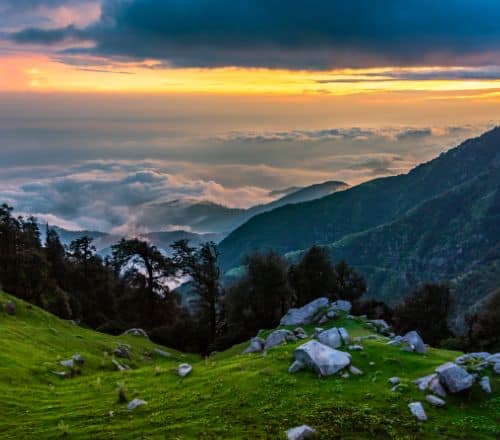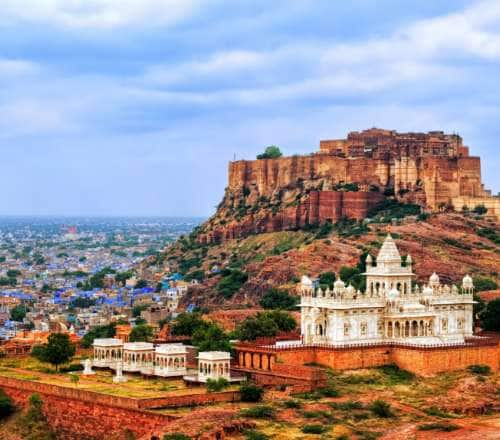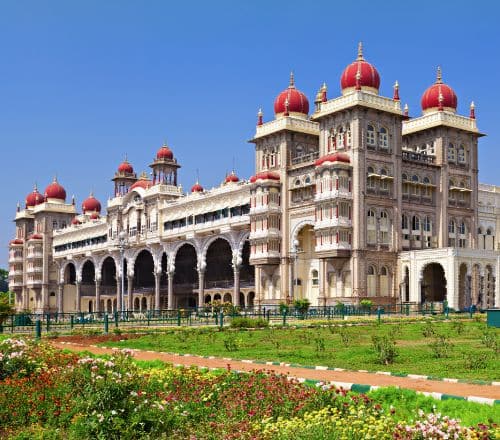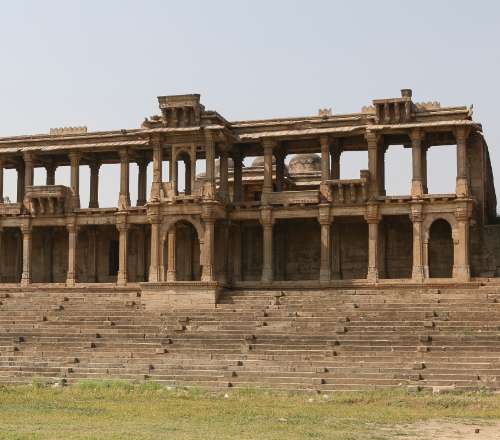Stay logged in to proceed with bookings, orders and offers.
On changing the terminal, you will loose items in your cart. Are you sure you want to change your terminal?
Asia's most prominent contemporary art festival steals hearts and puts Kochi on the global map of arts and culture
The first time I stepped foot on Fort Kochi’s cobblestoned streets was amid the lull of the Covid pandemic. The borders were open, and the lockdown was over, but the city was still hushed. As I walked past the iconic promenade, munching on pickled mangoes and watching the sun shy behind the clouds, I wondered how the city would have looked in its final form. I already had my answer, at Kochi-Muziris Biennale, where the coastal cosmopolitan revealed itself—a vibrant, breathing memoir of the region’s cultural history and artistic magnificence.
People’s eyes lit up with curiosity when I talked about the Kochi-Muziris Biennale. The amazement is usually followed by a prompt, “what’s that?”. My reaction each time is the same, a mix of exhilaration (that I am going to introduce them to an international art festival in our country) and surprise (that nobody has told them about it yet).
The word Biennale originates in the Italian language (after biennially). In the 1930s, Venice hosted an international art exhibition called the Venice Biennale. Ever since, the biennale has become a term associated with an international music festival or art exhibition held once every two years.
The story of Kochi Biennale goes something like this. In 2010, two artists with roots in Kerala found a sweet opportunity knocking at their doorstep. The then culture minister of Kerala summoned them to put Kochi on the international map of arts and culture. Inspired by the Venice Biennale the artists, Bose Krishnamachari and Riyas Komu proposed Kerala’s authentic, contemporary art festival, Kochi-Muziris Biennale. Ever since, the Kochi Biennale Foundation has been promoting art, culture, and education in India, culminating in the famed biennial international exhibition.
Today, the Kochi-Muziris Biennale is Asia’s most significant contemporary art festival and India’s largest art exhibition. For three months, the fest sees an international audience of around two lakh visitors each month.
What I particularly like about the festival is that it fosters communal participation. To begin with, the festival is curated to showcase the work of artists across countries. In its most recent edition, artists from Chile, Poland, South Korea, Algeria, and Egypt participated with Indian artists.
A second layer of flavour is added by the works of art, which serve the viewer a rich platter of thoughts, emotions, and stories–both real and fictional. Shubigi Rao, the curator of KMB 2022-23, described in her note, “This edition of the Kochi-Muziris Biennale embodies the joy of experiencing practices of divergent sensibilities, under conditions both joyful and grim.”
A third thing to note about the exhibition is the venue. If you imagined a vast, open playground with a bunch of tents with tables lined up endlessly under a cheap tarpaulin, you couldn't be farther from reality. KMB is hosted in multiple venues across Fort Kochi and its nearby islands, with the main venue being Aspinwall House, a 150-year-old, sea-facing bungalow. It was the business office of John Aspinwall, a trader of pepper, timber, spices, coffee, tea, and other goods.
Other venues include art cafes, warehouses in Mattancherry, heritage hotels by the coast, townhouses, and more. As you walk from one embellished venue to the other, Kochi treats you to sublime views of the deep blue ocean, whitewashed traditional houses, hoards of charming tourists, and iconic towering trees. The experience is designed to consume contemporary artworks within the rustic godowns and chic cafes and highlight Kochi’s history piece by piece.
Historically known as the Queen of the Arabian Sea, present-day Kochi has a glorious history of maritime trade, the rule of powerful dynasties, and, inevitably, legendary wars. The first mention of Cochin dates back to the 15th century when a Chinese voyager wrote about a fellow admiral’s treasure fleet. Ever since, great Italian travellers, dynasties of China, kingdoms of Portugal and the Netherlands, and rulers of Britain and Arab nations have woven a complicated cultural story for the city.
Having served as a vital spice trading centre, Kochi whispers its past through iconic buildings such as the Aspinwall House, pastel churches, and fragile old buildings. Finding about Cochin’s past glories is an adventure, played out on a subtle canvas of Chinese fishing nets, Jewish streets, and, more recently, graffitied walls.
Muziris was a port, believed to have existed north of Kochi. It was a powerful centre of the Indian spice trade, frequented by the Jews, Syrians, Chinese, Arabs, and Greeks for ages. It is believed that the port was destroyed by a cyclone and floods in 1341, erasing all traces of its existence from Kochi's history. The port is now part of a myth since no excavations in the impacted area have shown the presence of any 13th-century objects.
Many of Cochin’s famous sites that continue to hold tremendous cultural and historical importance have hosted the biennale in the last decade. These include the David Hall, Pepper House, Durbar Hall, Cabral Yard, and Parade Ground, to name a few. Muziris continues to live through the legends in the festival's name.
You’ll find eye-catching installations in public spaces, the journey of an artist’s entire life’s work splayed across an old hall, and gripping images pinned to the pastel walls of a petit cafe. The venues are at a walkable distance from each other. An equally exciting way to go about Fort Kochi is on a bicycle. Rentals are readily available around the town on a per-day basis.
Beyond art installations, you can look forward to seminars and talks, music performances and screenings, workshops, educational activities, and more at KMB. You can purchase the ticket offline at Aspinwall House and online on platforms such as BookMyShow.
A single-day ticket for an adult costs INR 150, while a weekly pass sells for around INR 1,000. If you wish to stay longer in Kerala’s industrial capital, buy the monthly access at INR 4,000. KMB also offers exclusive guided tours for groups of five individuals at INR 3,000 for three hours.
Kochi Muziris Biennale brings to life those corners of Cochin that are otherwise fast asleep, ensconced in the lap of an ancient culture. It draws the fine line between marvelling at a building's architecture, and understanding all the years, lives, love, and loss the walls and windows have seen over the years. I suppose this is one of the primal purposes of art—to see things for what they are and for what they have been or could be.
The Kochi Muziris Biennale 2022-2023 was scheduled between 23 December 2022 and 10 April 2023. The updates on the festival are announced @kochibiennale on Instagram.





The Adani One expressly disclaims all liability, direct and indirect, in respect to actions taken or not taken based on any or all the contents of this Blog. The Blog is an opinion of the contributor based on the collation of data from various sources and is provided only for information purpose. Adani One does not canvass, advertise, solicit, invite or induct for any product, merchandise, information, brand or any other materials mentioned in the Blog, nor does it obtain any monetary benefit from the same. Reader is advised to read and apply his/her intellect and discretion in this regard. Any Intellectual Property mentioned in this blog belongs to the rightful owner. We do not intent to claim any interest over the same.